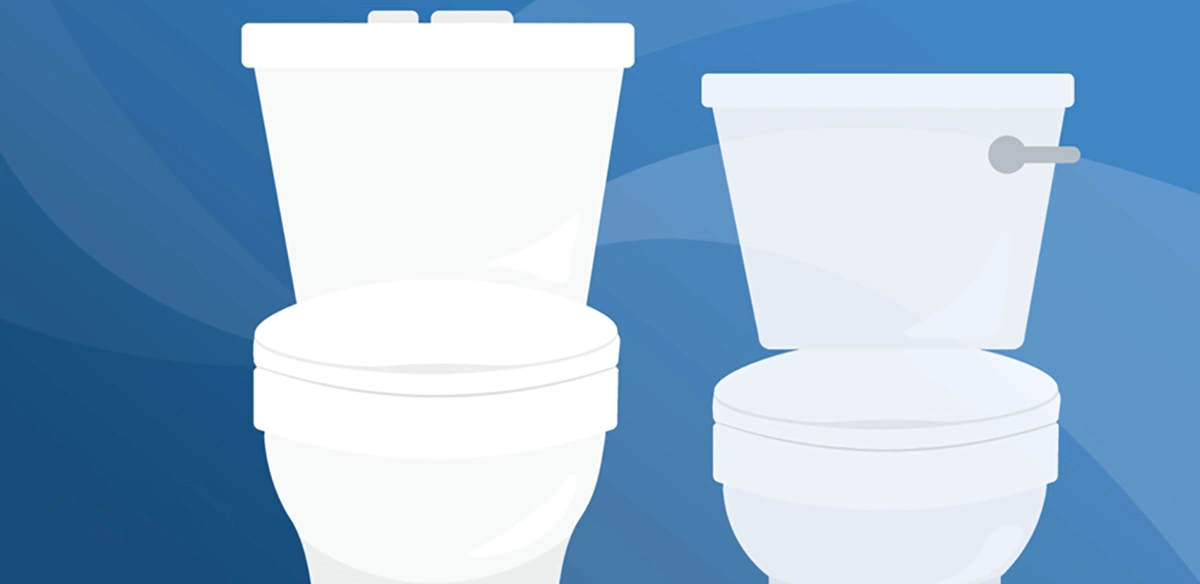In the world of plumbing and water conservation, toilets play a crucial role. Over the years, toilet technology has evolved significantly to address environmental concerns and save water. Two main types of toilets that have gained prominence are low flow toilets and regular flow toilets. Both aim to balance the necessity of hygiene with the imperative to conserve water. In this article, we will delve into the distinctions between these two types of toilets, exploring their features, advantages, disadvantages, and how they differ from each other.
Contents
What is a Low Flow Toilet?
Low flow toilets, also known as high-efficiency toilets, are designed to use significantly less water per flush compared to their conventional counterparts. These toilets utilize innovative flushing mechanisms, such as pressure-assisted or dual-flush systems, to effectively remove waste with reduced water consumption. The primary goal of low flow toilets is to address water scarcity issues and promote sustainable water usage.
Advantages and Disadvantages
When considering the differences between low flow toilets vs regular toilets, it’s essential to weigh their respective advantages and disadvantages.

Benefits of Low Flow Toilets
- Water Conservation: One of the standout advantages of low flow toilets is their ability to conserve water. They use significantly less water per flush, contributing to sustainable water usage and lower water bills.
- Environmental Impact: Choosing a low flow toilet helps reduce water wastage and minimizes your overall ecological footprint, promoting a greener lifestyle.
- Long-Term Savings: While the initial cost of a low flow toilet might be slightly higher, the long-term savings on water bills can outweigh the upfront investment.
Disadvantages of Low Flow Toilets
- Higher Initial Cost: Low flow toilets often come with a higher price tag due to their advanced technology and water-saving features.
- Potential Clogging: In some cases, the reduced water flow can lead to more frequent clogs, requiring extra maintenance and care.
- Adjustment Period: Users might need time to adapt to the unique flushing mechanism of low flow toilets, as it differs from traditional models.
What is a Regular Flow Toilet?
On the other side of the spectrum, regular flow toilets, also referred to as standard toilets, have been a staple in bathrooms for decades. These toilets have a more conventional design and are known for their robust flushing power.

Pros of Regular Flow Toilets
- Familiarity: Regular flow toilets have a well-established design and functionality, making them a familiar choice for many households.
- Lower Initial Cost: Compared to low flow toilets, regular flow toilets often have a more affordable upfront cost.
- Effective Waste Removal: The strong flush of regular flow toilets ensures efficient waste removal with each use.
Cons of Regular Flow Toilets
- Higher Water Consumption: Regular flow toilets use a larger volume of water per flush, leading to potential water wastage over time.
- Environmental Concerns: Due to their higher water consumption, regular flow toilets are less eco-friendly and contribute to excessive water usage.
How Low Flow Toilets Differ from Regular Ones
Low flow toilets and regular flow toilets exhibit distinct differences in various aspects, each contributing to their unique performance and impact on water usage.

Bowl Differences
- Low Flow Toilets: Low flow toilets often feature redesigned bowls and trapways. These adaptations are aimed at enhancing waste removal efficiency while utilizing reduced water volume. The modified bowl design facilitates effective flushing while using less water per flush, aligning with the water-saving goals of these toilets.
- Regular Flow Toilets: In contrast, regular flow toilets might have larger bowl sizes and more conventional bowl designs. The focus here tends to be on established functionality rather than the advanced water-saving features found in low flow models.
Flushing Power
- Regular Flow Toilets: Regular flow toilets are characterized by their robust flushing power. The higher water volume used in each flush results in a forceful expulsion of waste, ensuring thorough cleaning of the bowl.
- Low Flow Toilets: Low flow toilets rely on innovative flushing mechanisms to achieve efficient waste removal with less water. While their flush might not be as forceful as that of regular flow toilets, they maintain adequate flushing performance while minimizing water consumption.
Toilet Tank
- Low Flow Toilets: One of the noticeable distinctions lies in the size of the toilet tank. Low flow toilets typically feature smaller tanks, reducing the amount of water required to refill the tank after each flush. This design contributes to the overall water-saving strategy of these toilets.
- Regular Flow Toilets: Regular flow toilets often come with larger tanks to accommodate the higher water volume needed for a forceful flush. While this design contributes to effective waste removal, it also leads to increased water consumption.
Water Line Differences
- Low Flow Toilets: Low flow toilets feature smaller water lines, which contribute to their overall water-efficient design. The reduced water line size aligns with the goal of using less water throughout the toilet’s operation.
- Regular Flow Toilets: Regular flow toilets typically have larger water lines, reflecting the greater water volume required for their flushing mechanism. This design choice is intended to ensure consistent and powerful waste removal.
In conclusion, the choice between low flow toilets vs regular toilets depends on individual preferences, environmental considerations, and budget constraints. While low flow toilets excel in water conservation and environmental responsibility, regular flow toilets maintain their popularity due to their established design and lower upfront costs. Understanding the distinctions and unique features of these two types of toilets empowers homeowners to make informed decisions that align with their values and needs.
FAQ about the difference between low and regular flow toilets
Low flow toilets might be slightly more prone to clogging due to their reduced water volume per flush, but using them correctly and avoiding flushing non-flushable items can minimize this issue.
Low flow toilets don’t necessarily require special maintenance, but users might need to be more mindful of what they flush to prevent clogs. Regular cleaning and proper usage are key for both types.
By using a low flow toilet, you can save around 25-60% of water per flush compared to traditional toilets, contributing to significant water conservation over time.



